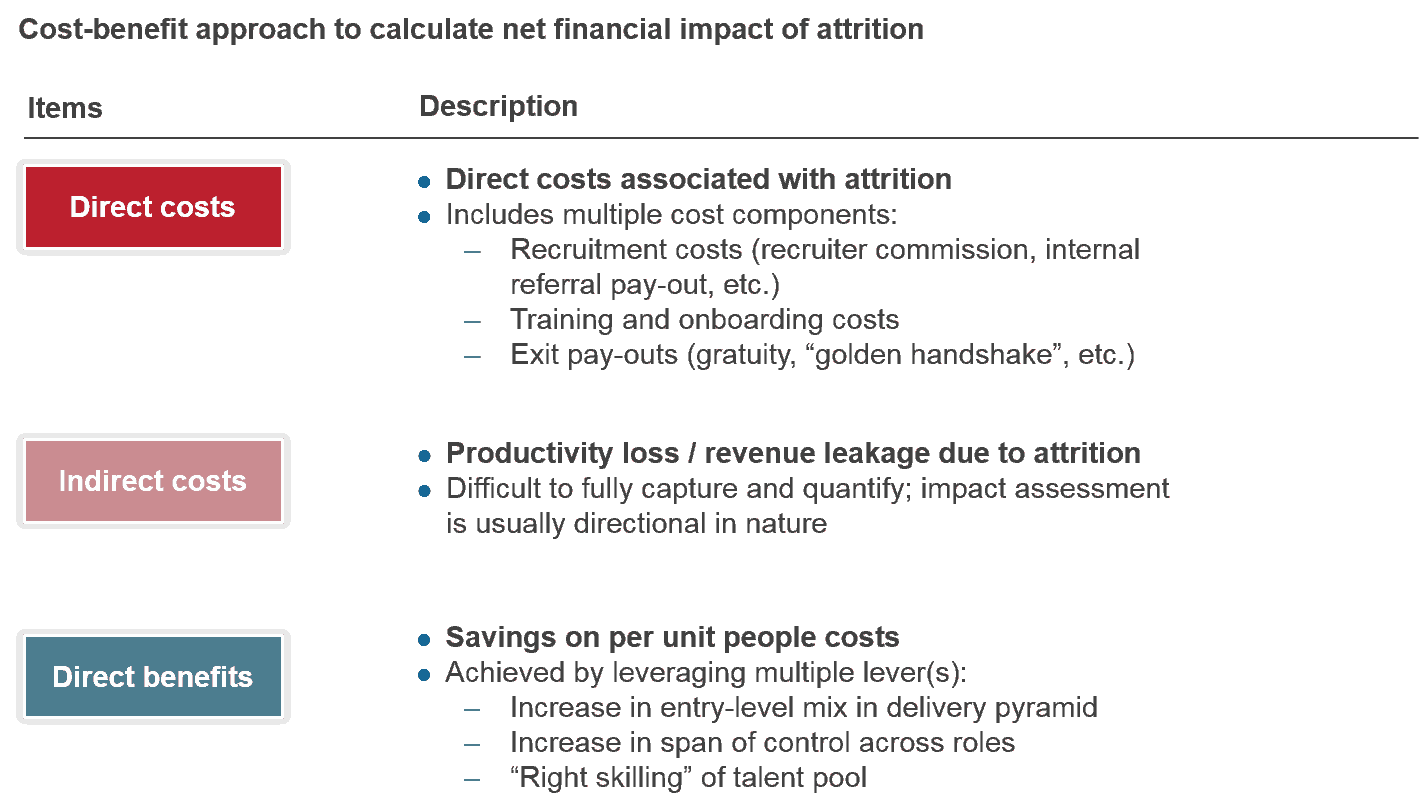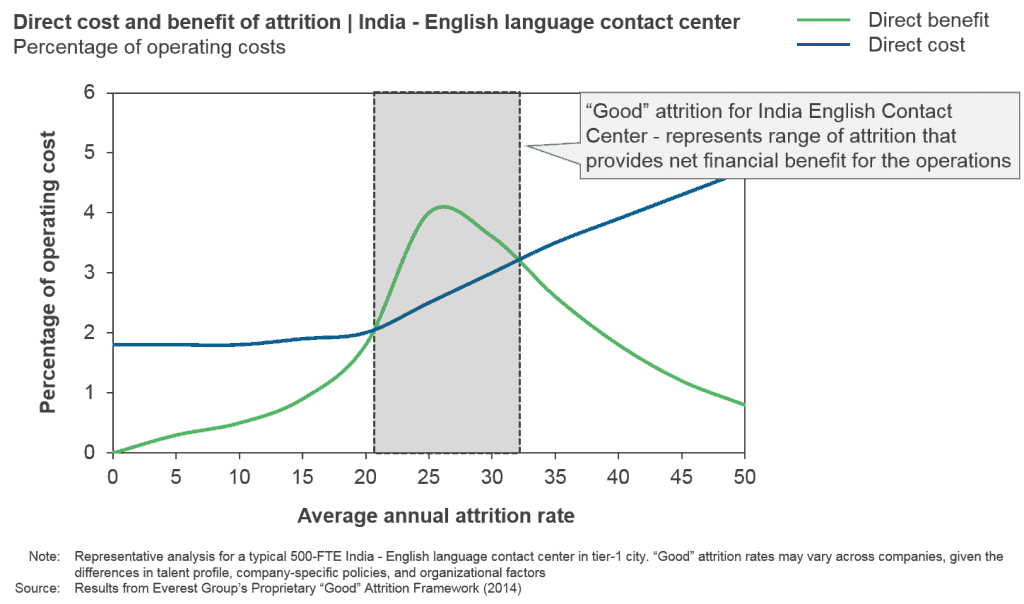
Managing attrition has always been a priority for business leaders in global services, and its importance continues to increase over time. Given rising competitive intensity for talent, especially in mature markets, attrition continues to consume significant mindshare of senior executives and HR managers. The key challenge has always been to quantify the actual impact of attrition on their companies’ operations.
Everest Group has developed a quantitative framework to identify the financial impact of attrition, by evaluating both costs and benefits (see Exhibit 1). Attrition impacts two key parameters of business – direct attrition-related costs (e.g., expenses on recruitment, employee onboarding/training, and employee pay-outs) and productivity loss/revenue leakage. Although the benefits associated with attrition are often not fully understood, mature firms have been able to achieve lower employee costs per FTE by adopting strategic and policy-level levers.

Based on this framework, we define “good” attrition as the average annual employee turnover rate at which an organization has a net financial gain for its operations. Everest Group’s analysis indicates a good attrition rate in an India-based English language contact center is 25-30 percent annually (see Exhibit 2). Firms with a lower or higher turnover rate incur net costs.
Good attrition rates are influenced by both market- and company-specific factors, and vary by function and location. For instance, the Philippines has an attrition rate range similar to India’s for contact center services, but a much lower one for IT services. Operations in Eastern Europe and Latin America usually have a much lower rate of good attrition compared to Asia across all functions.

It is noteworthy that firms usually experience attrition-related benefits for work in which efficiency and standardization are key considerations. In complex and judgment-intensive work, it is often desirable to have a very limited attrition. Furthermore, the benefits of attrition are relatively easier to achieve in moderate- to large-scale and growing operations. Small-scale and low growth operations need to consciously develop employee career paths to mitigate the challenges of higher people costs associated with a stagnant workforce.
Business leaders and HR managers can benefit by adopting this quantitative approach to assess the impact of attrition on their operations. To gain maximum value, they should institutionalize metrics to fully estimate – ideally capture – both the costs and benefits of attrition. Business managers should also identify the level of attrition that is good for their operations, and plan for it in their annual budgeting and forecasting cycle.
For more details on this topic, please refer to our recently released report, How Much Attrition is “Good” Attrition?











